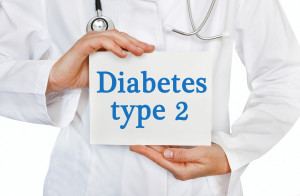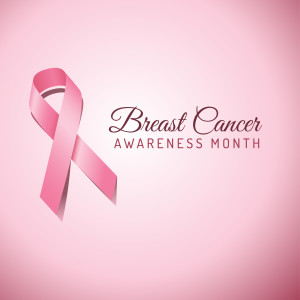When the Days are Darker, Shorter, and Colder, What Can You Do to Boost Your Mood?
 On December 21, the day of the Winter Solstice, Buffalo will receive only about nine hours of daylight. The average high temperature in December is about 36 degrees, with a low of 24, and we accumulate about 27 inches of snow. In a month that brings such dark, cold, snowy days that it can be easy to sigh, sit on the couch, and adopt the mantra of, “I’ll be inside binge watching Netflix until Spring.”
On December 21, the day of the Winter Solstice, Buffalo will receive only about nine hours of daylight. The average high temperature in December is about 36 degrees, with a low of 24, and we accumulate about 27 inches of snow. In a month that brings such dark, cold, snowy days that it can be easy to sigh, sit on the couch, and adopt the mantra of, “I’ll be inside binge watching Netflix until Spring.”
Winter months don’t have to result in your seasonal hibernation, however. If cold, dark days leave you feeling uninspired, unmotivated, and unhappy, it’s time to change your perspective on winter and learn how to become the master of your mood. Here are eight tips to help you beat the winter blues this year.
- Stay Active. It may not feel as motivating to go for a long walk on a winter day as it does during the summer, but bundle up and head outside when the sun’s out, and you’ll benefit from exposure to much-needed sunlight, and endorphin-boosting exercise. Oh, and don’t forget your sunscreen. Winter sun can damage your skin too.
- Start a Project or a New Hobby. Once the holidays are over, your calendar may be pretty open, and without weekend trips to the lake to look forward to, you may find you have extra time on your hands. Rather than spend that time watching Netflix or college basketball all winter, try a new hobby or start a project. Maybe it’s finally time to try skiing (which gets you active, outdoors, and exposed to sunlight), or repaint your guest room.
- Stay Warm. Being warm is a mood booster. While you may not have much control over the office thermostat, keep your home heated to a comfortable temperature, and warm your body from the inside out with warm foods and beverages, like healthy soups and decaffeinated teas.
- Don’t Let Your Diet Suffer. You may naturally feel more motivated to eat healthy during the summer when weekly trips to your local farmer’s market send you home with fresh fruits and veggies, but you have to keep the diet drive alive in winter too. While you may be more tempted to reach for high-calorie comfort food on cold days, make sure you’re fueling your body with healthy foods to keep your energy up.
- Sing a Song. Music has been proven to help improve one’s mood. On days when you’re just not feeling motivated, or when your daily commute through the snow has you on edge, pump your favorite tunes and sing along.
- Seek Exposure to Artificial Light. A light box or UV lamp that is designed to produce mood-boosting vitamin D rays has been scientifically proven to help boost your mood. These devices are inexpensive and are particularly helpful for those who work long hours indoors, or who experience symptoms of seasonal affective disorder (SAD), a mood disorder often triggered in the winter.
- Stay Social. A simple way to boost your mood in the winter is to surround yourself with people who make you happy. Make sure you’re spending time with family and friends during the winter. When winter driving can be unpredictable, it can be easy to cancel plans, or not make them in the first place. Make an effort to get out of the house and spend time with your loved ones. You’ll all benefit from time together doing activities you enjoy. Volunteering is another way to stay active, interact with your community, and give you a reason to smile.
- Get Out of Town. It may seem like cheating, but planning a vacation to somewhere warm and sunny during winter months can give you a temporary break from the monotony of winter and help you push through the rest of the season when you come home.
Talk to Your Doctor.
If you feel like nothing you’ve tried helps you improve your mood or keep you motivated during the winter, you’re not alone. Many people struggle with more complex forms of SAD and depression. Make an appointment to talk to your doctor. He/she can diagnose a more serious condition, and put a treatment plan in place to help you conquer your mood once and for all.
And remember depression might be caused by an underlying medical condition, such as hypothyroidism or postpartum depression or a Vitamin D deficiency. The team of physicians at Chouchani, Sayegh and Robinson MD are here to help diagnose any conditions and discuss treatment options. Give us a call today.
More
 Do you know your ABCs? No, not those—the ABCs of a healthy diet. We’re talking about the vitamins, minerals, and nutrients that women need for optimal health. Even if you think you know which letters of the alphabet make essential vitamins (C? D? A?) ask yourself the more important question: Are you getting enough of each one? Despite our best efforts to eat healthily, many women are deficient in at least one essential nutrient. To make sure you are staying healthy, especially through winter cold and flu season, study up on the A, B-12, Cs of vitamins that you need in your diet.
Do you know your ABCs? No, not those—the ABCs of a healthy diet. We’re talking about the vitamins, minerals, and nutrients that women need for optimal health. Even if you think you know which letters of the alphabet make essential vitamins (C? D? A?) ask yourself the more important question: Are you getting enough of each one? Despite our best efforts to eat healthily, many women are deficient in at least one essential nutrient. To make sure you are staying healthy, especially through winter cold and flu season, study up on the A, B-12, Cs of vitamins that you need in your diet.
Vitamin A
According to the World Health Organization (WHO) vitamin A deficiency (VAD) is the leading cause of preventable blindness in children. In the most severe cases, it may also lead to night blindness in pregnant women, and increase the risk of maternal mortality. Symptoms of vitamin A deficiency may include dry eyes and skin, and an inability to see in dim light. Protect yourself, especially if you are pregnant or hoping to become pregnant, by ensuring your diet includes such vitamin A-rich foods as carrots, sweet potatoes, kale, spinach, broccoli, and eggs.
B-12
Many women don’t get enough of vitamin B-12, a vitamin essential for promoting neurological function, making red blood cells, and improving healthy digestion. Basically, vitamin B-12 is a big deal. Especially if you are a vegetarian, or eating a gluten-free diet, you may not be getting enough B-12. Women who are pregnant should also talk to their OBGYN about increasing their B-12 intake. Side effects of B-12 deficiency may include fatigue, anemia, tingling in the extremities, confusion, and a swollen tongue. To ensure you’re getting enough B-12, increase your intake of eggs, milk products, cheese, meat, fish, shellfish, and poultry.
Calcium
Women need calcium to promote healthy bones and minimize their chances of developing osteoporosis as they age. Unfortunately, even those who love their ice cream are often Calcium deficient. Symptoms may include muscle cramps or muscle weakness, fatigue, irritability, and a tingling sensation in the limbs. You can find ways to add calcium to your diet without adding more dairy, which is good news for women who are lactose intolerant. Other calcium-rich foods include almonds, broccoli, figs, oranges, sardines, navy beans, kale, and tofu.
Vitamin D
You know vitamin D as the sunshine vitamin, but what you may not know is that many women don’t get enough of it—especially those who are sun-conscious and those who live in a cloudy climate. Vitamin D is essential for protecting the immune system and fortifying our bones. If you’re pregnant, your OBGYN will likely want you to increase your Vitamin D intake as well. If you’re vitamin D deficient, you may experience fatigue, fragile bones, depression, or be at higher risk for obesity, and type II diabetes. Vitamin D doesn’t occur naturally in many foods, so to make sure you’re getting enough. Try to spend 15 to 30 minutes a day in the sun (and remember to apply sunscreen in all seasons). You may also be able to boost your vitamin D by eating foods fortified with extra vitamin D, such as breakfast cereals, as well as milk, egg yolks, cheese, yogurt, and salmon.
Folic Acid
Folic acid is responsible for helping to produce red blood cells and is essential for proper DNA production, which makes it another necessary vitamin for pregnant women, and especially for women looking to conceive. Symptoms of a folic acid deficiency may include fatigue, mouth sores, and gray hair. It may also cause anemia, a condition with such symptoms as weakness, irritability, shortness of breath, and pale skin. Foods rich in folic acid include spinach and other leafy greens, citrus fruits, beans, and rice.
Iodine
Iodine is a nutrient that is responsible for helping to regulate the thyroid hormones that control the metabolism. Iodine deficiency is particularly dangerous for women who are pregnant and their fetus, which is why many prenatal vitamins include iodine. Women who are suffering from an iodine deficiency may experience a swelling of the thyroid around the throat (known as goiter), weight gain, fatigue, thinning hair, and constantly feeling cold. Fortify your diet with iodine-rich foods, such as sea vegetables like kelp, cranberries, yogurt, navy beans, strawberries, and cheese.
Iron
That’s right; Popeye isn’t the only one who needs spinach. You do too, Olive Oil. Since women menstruate monthly, they are at a higher risk of being iron deficient. Even pregnant women are susceptible to iron deficiency, which could cause fatigue, shortness of breath, dizziness, and brittle nails. Make sure you’re getting enough iron-rich foods, such as spinach, lentils, pumpkin seeds, raisins, quinoa, and…dark chocolate. You’re welcome.
If you are pregnant or hoping to become pregnant, and have any questions or concerns about your diet or vitamin intake, talk to your OBGYN. Your doctor can help you put a plan in place to make sure you maintain healthy levels of all your vitamin A, B, Cs.
More
How to Survive the Holidays Without Overindulging
 It’s the most wonderful time of the year again, and you’re freaking out. Everywhere you go, you don’t see glistening snow and smell effervescent pine cones. You see sugar topped cookies and cakes and smell savory roasted meats. You love so much about the holiday season, but you dread all the extra calories that come along with parties, gifts of food, and magical memory merrymaking.
It’s the most wonderful time of the year again, and you’re freaking out. Everywhere you go, you don’t see glistening snow and smell effervescent pine cones. You see sugar topped cookies and cakes and smell savory roasted meats. You love so much about the holiday season, but you dread all the extra calories that come along with parties, gifts of food, and magical memory merrymaking.
Don’t hide in your house all season long just to avoid the temptation of holiday eats. Follow these seven holiday hacks to get the most out of the season of joy without overindulging or packing on the pounds.
- Protect Yourself from Mid-Day Temptation with a High Protein Breakfast. Oh no. Carol brought her famous gingerbread cookies into the office, and you’re starving. Before you know it, one little gingerbread man has turned into four, and you’re laden with guilt and gumdrop button crumbs. You’ll be better able to fight mid-day sugar cravings and unexpected temptations if you start with a healthy breakfast that includes hunger-quenching protein. Consider a healthy protein shake as a way to start your day off right.
- Eat Something Healthy Before Grocery Shopping. Not only are you surrounded by holiday treats at home, the office, and all your friends’ houses, you’re surrounded at the grocery store. Walk through the bakery this time of year and it’s even more tempting than usual since it’s packed with holiday cookies, fruit cake, and yule logs. Researchers from Cornell University found that if you eat something healthy before you grocery shop, you’ll be less likely to add unnecessary junk food items to your cart. Never grocery shop hungry, or else your bad decisions will follow you home for the holidays in the form of pumpkin spice ice cream, pumpkin spice bagels, and pumpkin spice potato chips (oh yes, they’re real).
- Don’t Skip Your Daily Workout. Your calendar may be filled with parties, shopping, and other holiday commitments, but it’s more important than ever to make sure you’re getting exercise daily. Thirty minutes of exercise five days a week will help you stay energized, burn calories, and make better dietary decisions. And yes, mall walking can count.
- Don’t Skip Meals Before Holiday Parties. Admit it. You skipped lunch before your Thanksgiving dinner, didn’t you? Let us guess. You figured you’d eat the equivalent of two of your regular meals during your Thanksgiving feast, so you would be better off skipping lunch. This choice can be an all-too-easy diet mistake. You’re better off eating a small, healthy meal before that big dinner party. Walk into cocktail hour starving, and you’ll be more likely to indulge in extra hors-d’oeuvres and chug an extra pint. Take the edge off your cravings with a healthy lunch so you can enjoy the company of the other party guests, and make sensible choices, no matter what’s on the menu.
- Take Your Dog for an Extra Walk (or Two). It can be tempting to stay indoors when the weather turns cold, but you and your dog both need to get your 10,000 steps in for the day. Commit to walking your dog before, or after dinner every day. Or, step up the challenge and walk him before and after dinner. We’re sure he’ll thank you with lots of extra love.
- Put Away Your Loose-Fitting Sweats. On chilly weekend days, all you want is to cozy up in warm sweatpants, but doing so may thwart your diet plan. When you regularly wear loose-fitting clothes, it can be easier not to notice the addition of a few extra pounds. Instead, choose formfitting clothing that makes you feel confident. It will encourage you to exercise and make healthy meal decisions throughout the day when you’re not hiding under layers of cotton-polyester blend.
- Stop Drinking Soda. Just Stop. Empty calories that come from sugary drinks can quickly lead to extra pounds you never saw coming. Always choose water over pop, sweet teas, energy drinks, and that extra glass of wine, especially during the holidays. Not only will you cut back on calories, drinking plenty of water will help you stay hydrated, shed pounds, curb cravings, and make healthy decisions throughout the day.
Remember, you don’t have to fear the holidays or go into December feeling resigned to weight gain. Yes, you will face extra food temptations, and your calendar will make it harder to find time for exercise this season, but consider it a challenge to head into 2018 as the best version of you possible—healthy, happy, and confident.
More
 Not only does safe sex offer positive emotional benefits to you and your partner, it offers physical health benefits too. Regularly participating in safe sex is actually a part of a healthy lifestyle. As if you needed another reason to snuggle with your sweetie, read on to learn all the ways sex can help you boost your health.
Not only does safe sex offer positive emotional benefits to you and your partner, it offers physical health benefits too. Regularly participating in safe sex is actually a part of a healthy lifestyle. As if you needed another reason to snuggle with your sweetie, read on to learn all the ways sex can help you boost your health.
Sex Strengthens your Immune System
Regular sex sessions increase levels of immunoglobulins (IgA) by 30 percent. IgAs are important antibodies in the blood that can help protect you from seasonal illnesses like colds and flus. Having sex once or twice a week raises the level of immunoglobulins (IgA) in the body, increasing your natural ability to fight colds and flu. If you’re prone to allergies, sex may be able to help there too. Research shows that sex reduces histamine levels in the body, which could help to ease the symptoms of hay fever.
Sex Can Reduce Your Risk of a Heart Attack
Research shows that having sex three times a week could reduce your risk of a heart attack or stroke by 50 percent and that women who have at least two orgasms per week are 30 percent less likely to have heart disease than those who do not have sex regularly.
Sex Keeps You Fit
Yes, sex can actually count toward your physical fitness goals. Even a 20-minute session can burn 200 calories, the equivalent of running for 15 minutes on a treadmill. See? And you thought all workouts had to be boring.
Sex Lowers Your Blood Pressure
That relaxed feeling you have after sex is not just in your head. Research shows that sex can lower systolic blood pressure levels, offering you another heart-healthy benefit.
Sex May Ease Menstrual Symptoms
Many women report that having sex before their period begins helps to ease menstrual pain in the days that follow. Science supports this theory, as muscle contraction that occurs during sex helps to release the tension in uterine muscles that causes menstrual pain. With a little bit of pre-planning, you can take the edge off your period cramps, no OTC meds necessary.
Sex Boosts Your Libido
More regular sex sessions will help to improve your libido and help ensure each session is more enjoyable. Women who have frequent sex benefit from increased lubrication, blood flow, and elasticity, which helps to improve comfort and enjoyment.
Sex Improves Sperm Quality
For men, studies show that regular sex improves the quality of their sperm. Only 10 days without sex can lower sperm quality, which is why couples hoping to conceive may be able to improve their odds with regular sex sessions.
Sex Improves Bladder Control
Sex helps to strengthen pelvic floor muscles, which are responsible for avoiding incontinence, a condition that affects 30 percent of women at some point during their lives.
Sex Boosts Anti-Aging Hormones
That’s right. Forget expensive wrinkle creams. Sex can actually help you look younger. Sex boosts levels of the hormone dehydroepiandrosterone (DHEA) to five times their normal levels.
Sex Can Lengthen Your Lifespan
Research shows that having sex at least twice per week may increase an individual’s lifespan by three to eight years, which means couples with a healthy sex life give themselves a better chance to have more time together.
Remember, while there are many health benefits to having regular sex, there are also risks involved if you don’t follow safe-sex practices. To maximize your health benefits and lower your risks, be sure to use protection, know your partner’s health history, and avoid other risky behaviors.
More
 Individuals living with type II diabetes live their lives balancing on a dangerously thin line. They must constantly monitor their blood, manage symptoms, and try to manage the lifestyle choices that impact their health. If you or a loved one are suffering from type II diabetes, then you know all too well about the day-to-day struggles of this often-avoidable disease. The good news is that there are choices you can make that will help to lower your risk and help you to protect yourself from this damaging, and potentially deadly condition.
Individuals living with type II diabetes live their lives balancing on a dangerously thin line. They must constantly monitor their blood, manage symptoms, and try to manage the lifestyle choices that impact their health. If you or a loved one are suffering from type II diabetes, then you know all too well about the day-to-day struggles of this often-avoidable disease. The good news is that there are choices you can make that will help to lower your risk and help you to protect yourself from this damaging, and potentially deadly condition.
What is Type II Diabetes?
Type II diabetes is a condition that causes glucose, or sugar, levels in the blood to rise to abnormal levels, a state known as hyperglycemia. In addition, individuals with type II diabetes do not produce proper amounts of insulin, the chemical that helps to regulate glucose levels, leading to further complications. According to Healthline, 29.1 million Americans suffer from diabetes, yet 8.1 million may be undiagnosed or unaware of their condition. That means more than one in every ten adults age 20 or older have diabetes. These staggering numbers underscore the need for education, and self-awareness, to help reduce the number of new diagnoses each year.
Type II Diabetes Risk Factors
Type II is the most common form of diabetes. You may be at an increased risk of developing type II diabetes if you:
- Are overweight
- Have an immediate family member with type II diabetes
- Experienced gestational diabetes during pregnancy
- Have already been diagnosed as being prediabetic
- Have high blood pressure
- Have high cholesterol
- Smoke
How to Lower Your Risk for Type II Diabetes
Living a healthy lifestyle, which includes staying active and maintaining a healthy weight, are essential to lowering your risk for type II diabetes. Experts suggest that to minimize your chance of developing the disease, you should follow the tips below:
- Maintain a healthy weight. Obesity is a serious risk factor for type II diabetes. If you are overweight, talk to your doctor about a weight-loss plan that will work for you.
- Stay active. An important part of any plan to maintain a healthy weight needs to include regular physical activity. The average adult should get at least 30 minutes of physical activity five days a week. If you are not currently getting enough exercise, talk to your doctor about how to get started.
- If you were diagnosed with gestational diabetes, monitor your glucose levels. Six to 12 weeks after your baby is born, your doctor will want to test your blood glucose levels. If levels are still too high, your doctor may diagnose you as having type II diabetes. If your levels are normal, your doctor will likely want to continue testing your glucose levels every three years to ensure you have not developed the condition.
- Breastfeed your newborn. If you were diagnosed with gestational diabetes, your doctor will likely suggest that you breastfeed your newborn. Doing so will help ensure your baby receives proper nutrients and will help you burn calories.
If you believe that you may be at risk for developing type II diabetes, do not wait to talk to your doctor. He/she can help you put together a plan to start making the types of lifestyle changes that can help you lower your risk and maintain your overall health.
More
If you’ve ever had a yeast infection, then you know it’s an incredibly relentless, uncomfortable, and painful condition, and you likely would do anything to avoid a future diagnosis. If you now live in fear of the itch down there, know that not all feminine itching is related to yeast infections. There are a variety of factors that can cause itching and discomfort. In fact, 25 percent of the time when women visit their OBGYN suspecting they have a yeast infection, lab results indicate there is no infection to blame. Read more about some of the factors that could be causing your discomfort, and how to avoid them.
Dermatitis, or Inflammation of the Skin
If what you’re experiencing is an itching of the exterior vulva and not any internal itching, you may have a case of dermatitis or an inflammation of the skin. Causes of dermatitis can vary, and may include shaving with a dull razor, wearing tight pants, or keeping your sweaty gym clothes on too long post-workout. Avoiding these triggers is as simple as swapping out your razor when the blade becomes dull, choosing more loose-fitting clothing, and showering and changing promptly after your workout.
Harsh Beauty Products or Regimens
The cleansing or beautify products you use could be drying out your skin, or causing an allergic reaction that’s triggering the itching and discomfort you feel. Any products used around your vaginal area should be free of fragrances and as natural and ingredient-free as possible to avoid irritation. Check the labels of the products you use daily, and consider if a more natural solution may be available. In addition, if you’re douching, it could be drying out and irritating your vagina. Avoid douching products to help ensure you’re not stripping away natural lubricants.
Age
As women age, their estrogen levels naturally lower, which could alter the pH balance of your vagina. When this happens, your vaginal walls tend to thin and dry, resulting in itching, irritation, and pain, especially during sex. If you are premenopausal, talk to your OBGYN about possible supplements or prescription medications that may help balance dipping estrogen levels.
Sex-Related Irritants
Your discomfort may be related to your sexual activities. A new lubricant (or not enough), could be causing irritation. Avoid lubricants that use alcohol, an ingredient that causes irritation in some women. You could also be having a reaction to the latex in your condoms and may want to switch to a latex-free brand.
Bacterial Vaginosis
It’s possible that your itching and discomfort may be caused by this common vaginal infection, which is caused when an overgrowth of the vagina’s naturally occurring bacteria results in inflammation. You may be at an increased risk of bacterial vaginosis if you regularly douche, or have unprotected sex. Your OBGYN will be able to provide a diagnosis and an antibiotic to treat the infection.
Trichomoniasis
In more serious cases, your itching could be caused by something even more concerning than a yeast infection. Trichomoniasis is a sexually transmitted disease (STD) caused by a parasite that is becoming increasingly common. Symptoms for women include an odorous vaginal discharge, genital itching, and painful urination. Trichomoniasis can be treated, but you’ll need a diagnosis from your doctor and a prescription for an antibiotic. Like most STDs, trichomoniasis is spread through sexual contact, so the best way to avoid contraction is to follow safe sex practices.
How to Ease Your Itchy Symptoms
If you and your doctor have determined that your vaginal itching is not caused by an infection, a simple DIY remedy can help to ease symptoms. Apply a bland, soothing balm with no active ingredients, such as petroleum jelly, or coconut oil to the problematic area (external only of course).
Remember that the underlying cause of your itching could very well be a yeast infection or early signs that one is developing. If you’ve never been diagnosed with a yeast infection in the past, but have concerns one may be to blame for the discomfort you’re experiencing, make an appointment to see your OBGYN ASAP.
More
Reasons Women Experience Low Libido
 When you’re not in the mood, you don’t feel like you. Feelings of self-doubt can add stress and insecurity to your already complicated emotions as you start asking yourself, “What’s wrong with me?” Don’t let such questions impact your self-esteem. There are a variety of reasons why women experience low libido, that doesn’t have anything to do with whether or not they are a good partner. If you’re worried that you may not be in the mood for sex as frequently as you once were, read on for common explanations for this change in desire.
When you’re not in the mood, you don’t feel like you. Feelings of self-doubt can add stress and insecurity to your already complicated emotions as you start asking yourself, “What’s wrong with me?” Don’t let such questions impact your self-esteem. There are a variety of reasons why women experience low libido, that doesn’t have anything to do with whether or not they are a good partner. If you’re worried that you may not be in the mood for sex as frequently as you once were, read on for common explanations for this change in desire.
What’s Wrong with Me?
Before you start to worry that what you’re experiencing is not natural, know that there is a very real explanation for feeling a loss of libido. Hypoactive sexual desire disorder (HSDD) is the most common form of sexual dysfunction in women. It is defined as a deficiency or absence of sexual fantasies and desire for sexual activity that causes marked distress or interpersonal difficulty. HSDD is a condition experienced by 30 percent of women ages 18 to 59, which means you’re not alone in feeling an unexplainable loss of desire.
What Causes HSDD?
There are a variety of mental and physical factors that cause HSDD:
Physical Factors
- Low testosterone levels.
- Some medical conditions, such as endometriosis, fibroids, thyroid disorders, arthritis, cancer, diabetes, high blood pressure, coronary artery disease (CAD), and some neurological diseases.
- Certain medications such as antidepressants, blood pressure lowering medications, oral contraceptives, and some anti-seizure medications.
- Age.
- Menopause.
- Fatigue.
- Pregnancy, having recently given birth, or breastfeeding.
- Recent surgery, especially a procedure that impacted your breasts or genital tract.
Emotional Factors
- Depression, anxiety, or other mental health conditions.
- Stress.
- Peer pressure.
- Pressure to meet unrealistic sex standards set by pop culture or the media.
- Personal beliefs.
- Poor body image.
- Low self-esteem.
- History of physical or sexual abuse.
Lifestyle Habits
- Overconsumption of alcohol.
- Use of recreational drugs.
- Smoking.
Relationship Factors
- Interpersonal relationship issues.
- Partner performance issues.
- Poor communication of sexual needs.
- Sexual problems such as difficulty orgasming or pain during sex.
How do I Know if I’m Experiencing HSDD?
Symptoms of HSDD may include:
- Lack of sexual thoughts.
- Lack of sexual desire.
- Distress or relationship issues caused by lack of sexual thoughts or desire.
Can it be Treated?
The good news is that thanks to recent advancements and research, there are treatments available that have been proven effective in helping to kick-start the female libido. The type of treatment that will be most impactful for you will depend on the woman and the factors impacting her HSDD, however, proven treatment options include:
- Testosterone therapy.
- Changes to prescribed medications (note: always talk to your doctor before making any changes to your prescription medication usage or dosage).
- Sex therapy/relationship counseling.
- Treating underlying medical or mental health issues.
If you feel you may be experiencing HSDD, or if you have any questions or concerns regarding your sexual desire, talk to your doctor. He or she can help you understand the underlying factors impacting your libido and can help you determine the treatment plan that’s right for you.
More
 Last week, actress Julia Louis-Dreyfus announced she has breast cancer in a post on her official Twitter account saying, “1 in 8 women get breast cancer. Today, I’m the one”.
Last week, actress Julia Louis-Dreyfus announced she has breast cancer in a post on her official Twitter account saying, “1 in 8 women get breast cancer. Today, I’m the one”.
According to the National Breast Cancer Foundation, one in eight women in the United States will be diagnosed with breast cancer in their lifetimes. While we have made significant strides in breast cancer treatment options, the safest way to protect yourself from this deadly disease is through awareness and early detection. As we spend the month of October wearing pink ribbons and reflecting on those we’ve lost, and those who have persevered, take the time to familiarize yourself with the latest breast cancer screening guidelines. By following a regular routine of administering self-exams, and receiving recommended screenings from your OBGYN, you will put yourself in the best position to help us continue the fight against breast cancer.
Breast Cancer Screening Guidelines
According to the American Cancer Society, the frequency with which women should obtain a breast cancer screenings from their OBGYN is dependent upon age. More specifically:
- Women ages 40 to 44 are recommended to receive a mammogram annually if desired.
- Women ages 45 to 54 are recommended to receive a mammogram annually.
- Women 55 and older are recommended to receive a mammogram every two years but may continue to receive annual screenings if desired.
Regular Self-Exams
In addition to mammography screenings, women should also perform routine self-breast exams. Regular self-examinations help women ensure they are familiar with their breasts so that if any abnormality develops, they can identify the change and make an appointment to be examined by a doctor.
Family History
Women with a personal, or a family history of breast cancer are recommended to receive more frequent screenings. If your mother, sister(s), or grandmother(s) have been diagnosed with breast cancer, talk to your OBGYN. He/she will help you determine when to start receiving regular mammography screenings, and whether or not an MRI is also advisable to test for abnormalities.
Other Risk Factors
In addition to your family history, your doctor will need to have an understanding of other factors that could increase your risk of breast cancer and that may impact when you should begin receiving breast cancer screenings, and with what frequency. Such risk factors may include:
- Your age. A woman’s risk of a breast cancer diagnosis increases with age, particularly up until age 50.
- Childbearing history. The older a woman is when she has her first child, the greater her risk of developing breast cancer in her lifetime. Women who never have children are also at a greater risk of developing breast cancer.
- Menstruation history. Women are at a higher risk of breast cancer if they menstruated for the first time before age 12 or if they go through menopause after age 55.
- Genetic factors. Women with a mutation in the BRCA1 or BRCA2 genes are at a higher risk of developing breast cancer.
If you have any questions or concerns regarding your personal risk of breast cancer, talk to your OBGYN. He or she will be able to discuss your personal risk factors and will help you to determine a routine screening frequency plan that is right for you.
More
The Reasons Why Women Should Strive for 10,000 Steps Per Day
 It seems that everywhere you go these days, you hear increasingly more men and women talking about the total number of steps they’ve taken that day. They’re checking their fancy wrist gadgets—pedometers, fitness trackers, smart watches—as they strike to reach what must be a magic number: 10,000 steps. Is it hype? Is it healthy? How does your body benefit from 10,000 steps? Why not 10,001 or 9,999? What makes 10,000 steps the Goldilocks of fitness goals? The truth is there is some science behind the 10,000-step goal, making it more truth than hearsay. Learn what 10k every day can do for you, and why it’s time you started counting your daily steps too.
It seems that everywhere you go these days, you hear increasingly more men and women talking about the total number of steps they’ve taken that day. They’re checking their fancy wrist gadgets—pedometers, fitness trackers, smart watches—as they strike to reach what must be a magic number: 10,000 steps. Is it hype? Is it healthy? How does your body benefit from 10,000 steps? Why not 10,001 or 9,999? What makes 10,000 steps the Goldilocks of fitness goals? The truth is there is some science behind the 10,000-step goal, making it more truth than hearsay. Learn what 10k every day can do for you, and why it’s time you started counting your daily steps too.
Why 10,000 Steps?
Studies show that increasing one’s walking habit to 10,000 daily steps results in important health benefits. It’s important to keep in mind that while 10,000 is the goal most researchers suggest for the average American, if you are not active today, any increased amount of walking, stepping, or jogging will benefit your health. Still, 10,000 steps is an obtainable goal for the average adult and it’s a number that has an intrinsically motivational power over us.
Benefits of 10,000 Steps
Adults who reach 10,000 steps per day have been known to benefit from:
If 10,000 steps seems far too unobtainable based on your work or family responsibilities, know that the Centers for Disease Control and Prevention (CDC) recommend that adults engage in 150 minutes of moderate activity each week, which may include brisk walking. The CDC’s 150 minutes translates to about 7,000 to 8,000 steps, which may feel more reasonable to some and still meets recommended health goals.
How to Reach the 10,000-Step Milestone
If you’re ready to take the 10,000-step challenge, but aren’t sure how to achieve such a lofty goal, know that the 10,000-step achievement can be reached more easily than you may think. The average adult already walks about 6,000 steps per day through normal activity. To strive for 10,000, simply begin adding extra walking sessions to your normal routine. Start by adding an extra 30 minutes of brisk walking into your day. That alone will start you off with around 8,000 steps. You can achieve your 30 minutes before work by walking your dog, by taking your kids for a walk around your neighborhood, or even getting off the subway one stop early and walking the rest of the way to your office.
Invest in a Tracker
If you’re set to take on the 10,000-step challenge, you’ll want to invest in a pedometer or fitness tracker. You don’t need the most expensive model on the market, but you will need a tool to help you keep track of your daily step progress. (Many smart phones have apps that will also track steps.)
Remember, even if after a few weeks, you find you’re struggling to reach 10,000 steps, the most important thing is that you are getting up and being active. Any improvement in your activity level is an improvement for your health and wellbeing. If you have any questions regarding the amount of exercise you should be receiving, talk to your doctor.
More
 As your newborn begins to drift into sleep, his worries simply melt away. For moms, however, worrying about your baby never ends, even when he’s sleeping. The frightening reality is that if not properly positioned in a safe environment, your baby could experience an accidental injury while sleeping—or worse, a complication that leads to Sudden Infant Death Syndrome (SIDS). To keep your new addition safe all through the night, review the following newborn sleep safety tips.
As your newborn begins to drift into sleep, his worries simply melt away. For moms, however, worrying about your baby never ends, even when he’s sleeping. The frightening reality is that if not properly positioned in a safe environment, your baby could experience an accidental injury while sleeping—or worse, a complication that leads to Sudden Infant Death Syndrome (SIDS). To keep your new addition safe all through the night, review the following newborn sleep safety tips.
Sleep Positioning and Environment
How your baby is positioned for sleep is extremely important for his safety.
- Put your baby to sleep on his back on a flat, firm surface, like a crib or a bassinet. Your baby should sleep on his back until he’s one year old.
- Do not put your baby to sleep on a soft surface such as a waterbed, sofa, or soft mattress.
- If your baby’s crib is near a window, remove any dangling window cords, or any nearby electrical wires, as they could cause a choking hazard.
- Dress your baby in light sleep clothes, such as a blanket sleeper. Infant sleepwear should never include any drawstrings, ties, or hoods, and should not cover baby’s head.
- Keep the room at a comfortable temperature. If baby is overheating, his chest will feel hot to the touch.
- Give your baby a pacifier to help protect against SIDS. Do not hang the pacifier around your baby’s neck or attach it to clothes or toys.
Crib Safety
Make sure to use a crib or bassinet that meets current infant safety standards.
- Don’t use cribs with drop-side rails.
- Do not use portable bed rails. They may not prevent your infant from rolling out of bed, and may pose a risk of choking, or trapping.
- Don’t try to fix a crib that has broken or missing parts. Replace it with a new, reliable model.
- If using a crib mattress, cover it with a tightly fitted sheet.
- Only use the mattress designed for your baby’s crib or bassinet. A safe product should be designed so that the bed fits tightly inside the crib with no spaces, and the mattress should be firm and not dip in response to baby’s weight.
- To minimize the risk of suffocation, strangulation, or other dangerous situations, do not put toys, soft objects, loose bedding, or crib bumpers in the crib.
Do Not Bed-Share
If you have other little ones, or were blessed with multiples (such as twins or triplets), put each baby to bed in his own crib. Do not bed-share. That also means it’s important that you not put your infant in your own bed with you. Bed-sharing is the most common cause of death in babies under three months old. According to The American Academy of Pediatrics (AAP), your baby should sleep in your room and near your bed, but not in your bed for the first year of his life.
Sleep Length
Try to regulate your newborn’s sleep. Baby will need about 16 hours of sleep per day, and will likely take it in three- to four-hour sessions. Baby’s sleep habits will likely correspond to his need to eat every few hours. Proper amounts of food and sleep will help keep him less agitated and fussy.
Talk to Your Baby’s Pediatrician
If you have any questions about your baby’s sleep habits, or about infant sleep safety, speak to his doctor. He/she can answer any questions and guide you toward healthy practices so you and your baby can both sleep soundly.
More
 On December 21, the day of the Winter Solstice, Buffalo will receive only about nine hours of daylight. The average high temperature in December is about 36 degrees, with a low of 24, and we accumulate about 27 inches of snow. In a month that brings such dark, cold, snowy days that it can be easy to sigh, sit on the couch, and adopt the mantra of, “I’ll be inside binge watching Netflix until Spring.”
On December 21, the day of the Winter Solstice, Buffalo will receive only about nine hours of daylight. The average high temperature in December is about 36 degrees, with a low of 24, and we accumulate about 27 inches of snow. In a month that brings such dark, cold, snowy days that it can be easy to sigh, sit on the couch, and adopt the mantra of, “I’ll be inside binge watching Netflix until Spring.”







